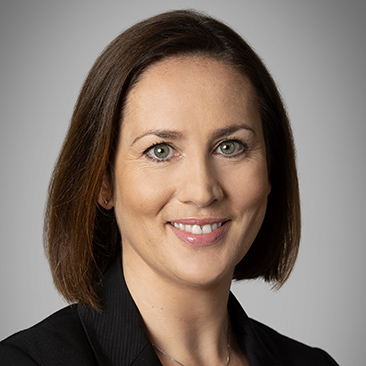The Supreme Court in London today gave judgment in the Waterfall I appeal, a dispute as to the distribution of the estimated £8 billion surplus of assets in the main Lehman operating company in Europe, Lehman Brothers International (Europe) (LBIE).
LBIE entered administration on 15 September 2008 and has now paid its unsecured creditors dividends of 100p in the £. The Waterfall I Supreme Court appeal addressed some of the key issues as to who should receive the surplus, which we discuss below.
“So-called” Currency Conversion Claims
Many of LBIE’s creditors have claims originally denominated in US Dollars. Their claims were converted to Sterling on 15 September 2008 for the purposes of claiming and being paid in the LBIE administration. Due to the subsequent weakening of Sterling against the US Dollar, these creditors are estimated to have suffered FX losses of £1.3 billion, being the difference between: (i) the amount of the contractual entitlement to payment in the original currency; and (ii) the dividends paid in Sterling, converted back to the original currency at the date of payment (a Currency Conversion Claim).
Overturning the decision of David Richards J at first instance and the majority decision of the Court of Appeal (with Lewison LJ dissenting), the Supreme Court held that Currency Conversion Claims do not exist.
The Supreme Court considered that Rule 2.86 of the Insolvency Rules 1986 is a complete code for currency conversion, with the result that there is no scope for a foreign currency creditor to have a second claim against the debtor on a non-provable basis.
Lord Neuberger stated that “given that the treatment of foreign currency creditors in corporate insolvencies was expressly dealt with for the first time in the 1986 Rules, it appears to me that there must be a presumption that the new rule 2.86 was intended to spell out the full extent of a foreign currency creditor’s rights, particularly when one bears in mind the fact just mentioned that the purpose of the 1986 legislation was to simplify and clarify the law”.
Ranking of subordinated debt
The Court considered whether LBIE’s subordinated debt of approximately £1.25 billion should be repaid before or after statutory interest and non-provable claims. Upholding the decision of David Richards J and the Court of Appeal, the Court held that the subordinated debt ranks behind both statutory interest and non-provable claims.
The Court overturned the Court of Appeal’s reasoning that the subordinated debt should be considered a contingent debt payable only after LBIE has paid its prior ranking liabilities in full, and restored the decision of David Richards J that LBHI2 cannot prove for the subordinated debt until all senior claims are paid or provided for in full.
Administration statutory interest
Reversing the judgment of the Court of Appeal and reinstating, in part, the judgment of David Richards J, the Supreme Court held that statutory interest accrued but not paid in LBIE’s administration is not payable in a subsequent liquidation to creditors who proved in the administration.
The Court overturned David Richards J’s analysis that creditors who were not paid statutory interest in an administration would be entitled to make a non-provable claim in a subsequent liquidation for their contractual interest. The Court held that rule 2.88 provides a complete statutory code for the recovery of interest on proved debts.
Lord Neuberger noted that he had come to the decision “without enthusiasm” and that it was an “unattractive conclusion” but expressed that “under the United Kingdom’s constitutional arrangements, it is not normally appropriate for a judge to rewrite or amend a statutory provision in order to correct what may appear to have been an oversight on the part of Parliament.”
Liability of LBIE’s members as contributories
LBIE is an unlimited company and therefore its shareholders, LBL and LBHI2, are potentially liable pursuant to section 74 of the Insolvency Act to contribute sufficient funds to pay LBIE’s “debts and liabilities”. Overturning, in part, the decision of David Richards J and the Court of Appeal, the Court held that contributories are liable to fund non-provable liabilities but are not liable to fund administration statutory interest.
The Court also held that the LBIE administrators cannot prove against LBHI2 or LBL for their potential liabilities as contributories and that there cannot be a set-off in LBIE’s administration of the potential contribution claim against LBHI2 and LBL’s claims, overturning the decisions of David Richards J and the Court of Appeal.
In light of the decisions on contributory liability and set-off above, the Court held that a modified version of the contributory rule does apply in LBIE’s administration. The modified rule provides that an administrator can retain dividends otherwise payable to contributories up to the level of their estimated potential liabilities, until the extent of any contribution claim is clear. Part of Lord Neuberger’s reasoning was that it would fill the gap left by the disapplication of set-off.
Comment
The Supreme Court judgment addresses extremely high value and novel issues arising in the event of a surplus in an insolvency, as well as the unusual status of LBIE as an unlimited company.
The judgment has clarified a number of key areas, as well as commenting more widely on the purpose and construction of the insolvency code and limiting the scope for non-provable claims. It is a very favourable ruling for Lehman Brothers Holdings Inc, the ultimate parent company of the group (LBHI) and for LBHI2 and LBL, the shareholders of LBIE.
Weil acted on the Supreme Court appeal for LBHI. The appeal was led by London Restructuring partner Mark Lawford, assisted by Litigation associate Frankie Cowl and Restructuring associates Lindsay Merritt and Rosalind Meehan. Lehman Brothers Holdings Inc was represented in Court by Barry Isaacs QC.
Weil has represented Lehman Brothers Holdings Inc since its historic bankruptcy filing in September 2008. As part of the ongoing representation, we continue to field a multi-disciplinary team, led in London by Adam Plainer.
Contributor(s)


More from the Weil European Restructuring Blog
This website is maintained by Weil, Gotshal & Manges LLP in New York, NY © 2020 Weil, Gotshal & Manges LLP, All Rights Reserved. The contents of this website may contain attorney advertising under the laws of various states. Quotation with attribution is permitted. This publication is provided for general information purposes only and is not intended to cover every aspect of the purpose for the law. The information in this publication does not constitute the legal or other professional advice of Weil London or the authors. The views expressed in this publication reflect those of the authors and are not necessarily the views of Weil London or of its clients. These materials may contain attorney advertising. Prior results do not guarantee a similar outcome.
















